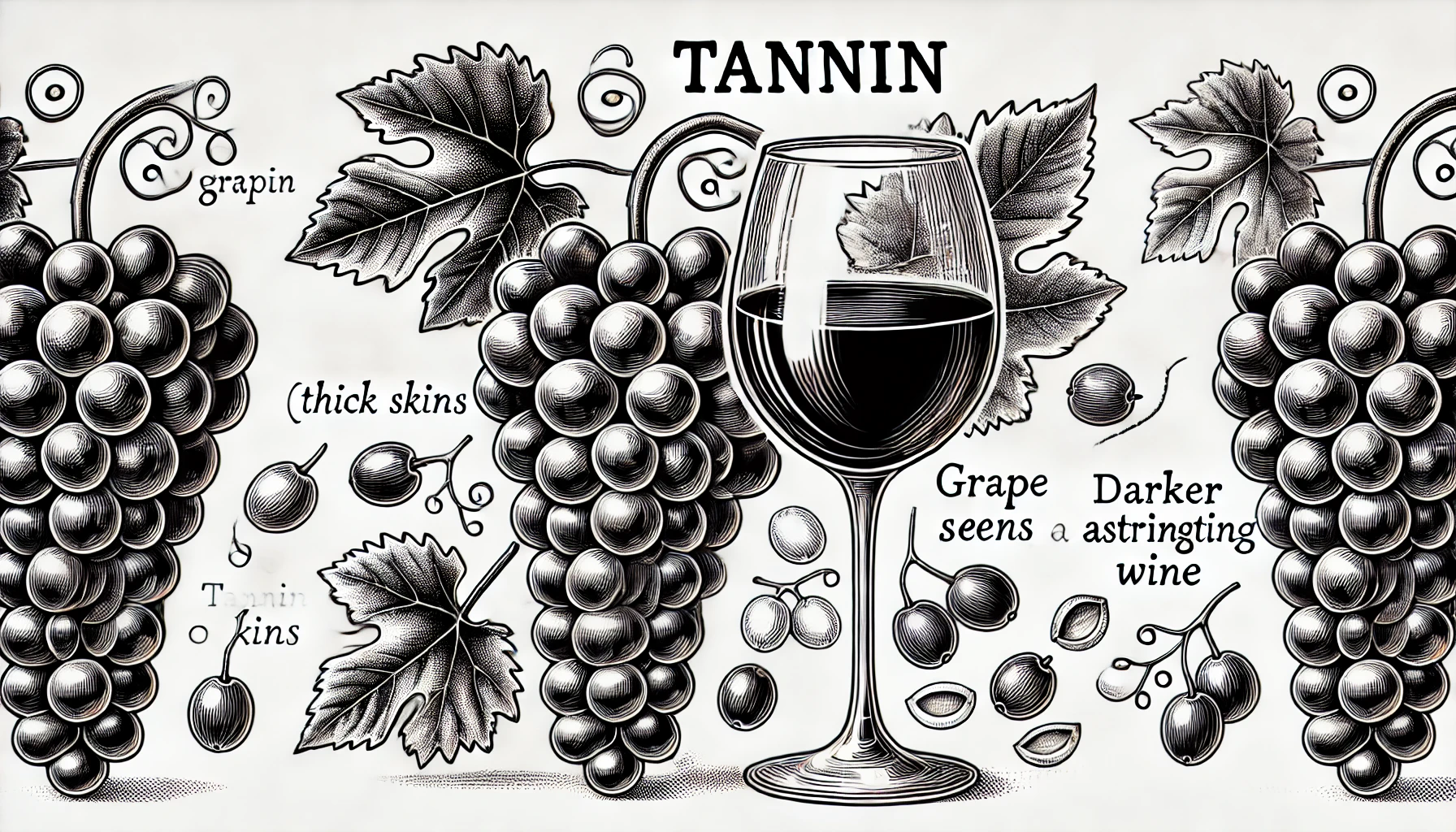
Tannin is one of the most talked-about components of wine. Particularly red wine, as it plays a vital role in the structure, texture, and aging potential of the wine. Tannins are natural compounds found in grape skins, seeds, and stems, as well as in the oak barrels used for aging wine. They belong to a group of compounds called polyphenols, which are responsible for the astringency and bitterness in wine.
When you taste a wine with high tannin levels, you’ll likely notice a drying sensation in your mouth, similar to the feeling you get from drinking strong black tea. Tannins bind with proteins in your saliva, leading to that dry, puckering sensation. While some people may find this unpleasant, tannins are essential to the balance of the wine and contribute significantly to its overall structure.
Tannins act as a natural preservative. That´s why wines with higher tannin levels, such as Cabernet Sauvignon or Nebbiolo, tend to age well. Over time, the tannins soften, and the wine becomes smoother and more integrated. This is why many red wines are cellared for several years before they reach their peak drinking potential.
Tannins also interact with food, making them an essential factor in wine pairing. They help cut through rich, fatty dishes like steak or lamb, balancing out the flavors. Wines with softer tannins, like Pinot Noir or Merlot, tend to pair well with lighter fare.
Understanding tannins can greatly enhance your wine-tasting experience, as it helps explain why certain wines feel fuller, drier, or more complex on the palate.
Curious about more wine terms and insights? Visit our Wine Wiki section and explore the basic wine terms for expert definitions and tips!